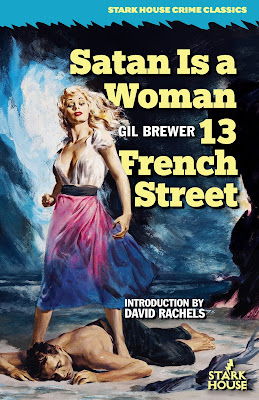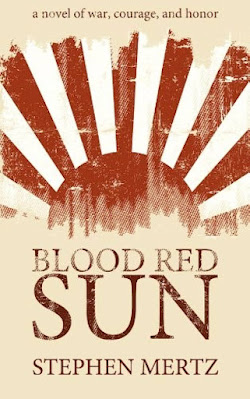Stephen Mertz cut his teeth writing hard-nosed action-adventure fiction set in Don Pendleton's Mack Bolan literary universe. In the 1980s, while penning some of the very best Executioner novels, Mertz expanded the scope of his writing by elevating genre fiction into a much broader scale. That successful experiment was Blood Red Sun, a novel first published in 1989 by independent publisher Diamond Books, a company funded by The Destroyer author Warren Murphy. The book was later reprinted by Crossroad Press in 2012, and is now available in a sleek, revised new edition from Wolfpack Publishing.Unlike many WWII military-fiction novels, Blood Red Sun is unique in its premise and timeline. The narrative takes place in September, 1945, after Japan's formal surrender to the Allied forces following the atomic bombings of Hiroshima and Nagasaki. The book's protagonist is savvy Sergeant John Ballard, a thirty-five year-old fighting man who has spent the majority of the war engaged in combat in the Pacific Theater. What's left of his unit is ultimately just two men, Tex Hanklin and Wilbur Mischkie, both of which play important roles in Ballard's next assignment – preventing the assassination of U.S. General Douglas MacArthur.
In the book, Japan's surrender leads to a fragmented state of affairs for the country's military leadership. Within the ranks of the upper echelon, conspirators exist to prevent Japan's formal surrender to MacArthur. These conspirators refuse to accept defeat and feel that Japan's Emperor, Hirohito, is doing an injustice and disservice to the proud Japanese people. The schemers, all defined as opposing forces of Hirohito, are secretly building their own alliances to counter each other. It's essentially a den of snakes that also involves a proud Japanese flying Ace named Baron Tamura. The Baron's portion of the narrative involves his niece Keiko, a twenty-four year-old woman sympathetic to the Allied force initiative. Keiko also plays a prominent role as a potential love interest for Ballard.
As a fan of Stephen Mertz's pulpy writing style, and his masterful grip on men's action-adventure writing, I was savoring the opportunity to read Blood Red Sun. Mertz draws on his prior experiences and strengths to create the story. As a fan of his M.I.A. Hunter series, I could see some similarities.
The characters Ballard, Hanklin, and Mischkie reminded me of M.I.A. Hunter trio of Stone, Wiley, and Loughlin. Like a great M.I.A. Hunter novel, the same type of setup presents itself here when Ballard's team enters the Japanese jungle to retrieve a military leader. They rely on a small band of Filipino guerrillas to help them with the mission. This same sort of scenario was often used as Stone's team entered Asian jungles with an assist from Laos, Cambodian, or “South Vietnamese” guerrillas. Mertz even introduces ninjas into the story, an element that M.I.A. Hunter co-writer Joe Lansdale seemed to fixate on, shown in the series' fourth installment, Mountain Massacre. Additionally, the characteristics of Tex Hanklin was similar to Stone's Texan teammate Hog Wiley.
These similarities to other Mertz creations doesn't make Blood Red Sun unoriginal or any less enjoyable. Quite the contrary. In fact, it illustrates how Mertz is cohesive and continuous, using his strengths and experiences as a genre storyteller to broaden the narrative. In fact, this is Mertz's most ambitious novel as it incorporates a lot of fine details surrounding WWII, the political landscape of Japan and the U.S. during that era, and famous, historical figures that are featured as characters in the story. Mertz takes some liberty with these characters, but left me feeling as though what he presented in terms of command, dialogue, and behavior, was probably art imitating real life.
In terms of action-adventure, Blood Red Sun has it all. The white-knuckled scenes of Ballard storming a landing strip with all guns blazin' was ripped right out of the pages of a vibrant Men's Action-Adventure Magazine. Mertz's descriptions of walls descending in bullet-hail, prison breaks, Kamikaze dives, ninja attacks and jungle warfare are balanced well with the political, backroom brawling conducted by various Japanese and American military leaders.
Mertz's novels like Blood Red Sun are positioned on a grander international scale like The Castro Directive (Cuba) and The Korean Intercept (Asia), but still possess the men's action-adventure tropes that make the books way more enjoyable than a bestselling Tom Clancy ghostwritten tech-thriller. Mertz's literary mojo is authentic, extremely enjoyable, and saturated with human emotion that easily conveys to his readers. Blood Red Sun is a scorching red-hot read and I highly recommend it.
Buy a copy of this book HERE.





















